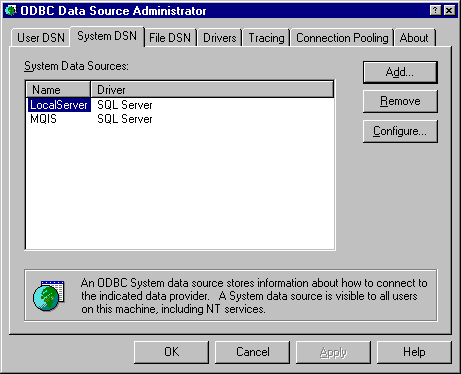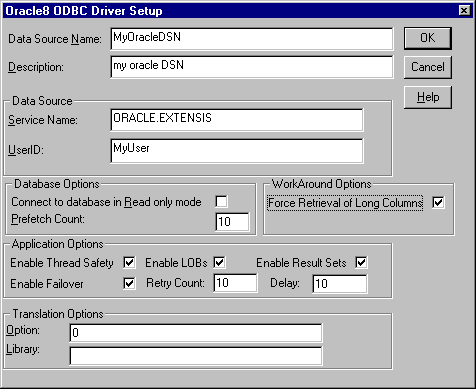Before you can access catalogs through Portfolio, you must verify that you have the correct ODBC drivers installed on the machine that will be running Portfolio Server. Then you’ll need to set up the SQL database. When that is done you can install both Portfolio SQL Connect and Portfolio Server software. There is no direct interface in either of these Portfolio products. SQL Connect requires no user interface, and the Portfolio Server is accessed and administered remotely using standard Portfolio application software.
Set up the SQL Server
On the SQL database computer, create a new SQL database.
Refer to the user documentation provided with the SQL application for guidance.
SQL Server 6.5: You must specify a maximum size for your database. As a general rule, estimate 15K/record for small (112x112) thumbnails and 30K/record for large (256x256) thumbnails. Since it is difficult to expand a database after it is created, it may be useful to leave room for unexpected growth.
Create an administrative user for the database.
SQL Server 6.5 and 7.0: A user with administrative rights must be created for this database. This can either be the standard “sa” account, or another user with database owner (dbo) rights. Make sure the “master” database is the default database for the dbo you’ve created.
SQL Server 6.5 and 7.0: Portfolio Server will create one connection per user per database. Increase the maximum number of concurrent connections allowed by the system, if necessary. For example, if you are serving two Portfolio SQL catalogs from one SQL server, and each database has 50 users connected (even if they are the same set of users in each case) you’ll need at least 100 concurrent connections to the SQL server.
Oracle 8i: The administrative user that you create must have the DBA role assigned to it.
Install the Correct ODBC Drivers
SQL Server 6.5 and 7.0: Install the ODBC and SQL Server drivers according to the instructions supplied with the Microsoft SQL Server.
Oracle 8i: Install the Oracle Client software (including ODBC and Oracle driver options). In the ODBC Control Panel, create a System DSN with the user name you created created in step 2. IMPORTANT! Make sure the “Force Retrieval of Long Columns” option is checked (enabled).
When the ODBC driver has been verified (and the DSN created if this is an Oracle database) you can proceed with setting up Portfolio SQL Connect and Portfolio Server.
Oracle Only: Create a DSN
To create a DSN:
Open the ODBC (32 bit) Control Panel (Start > Settings > Control Panel > ODBC (32 bit).
In the “ODBC Data Source Administrator” dialog, select the “System DSN” tab.
Click “Add.”

In the “Create New Data Source” dialog, select the Oracle ODBC Driver.

Click “Finish.”
The Oracle ODBC Driver Setup dialog will be displayed.
Enter the following information:
Data Source Name: The name of the DSN you are adding.
Service Name: The name of the Oracle instance, usually in the format “databasename.domain”. Check with the Oracle Database Administrator for the correct name.
UserID: A valid user ID for the Oracle database. This person must have database ownership rights.
Force Retrieval of Long Columns: Must be enabled.
All other fields: For the remaining fields, accept the default settings.
The completed form should look something like the screen shot shown.

Click “OK” to accept the changes and add the DSN.